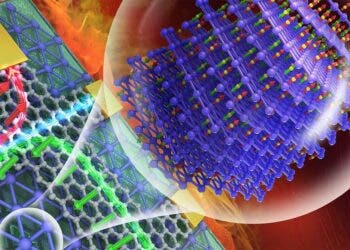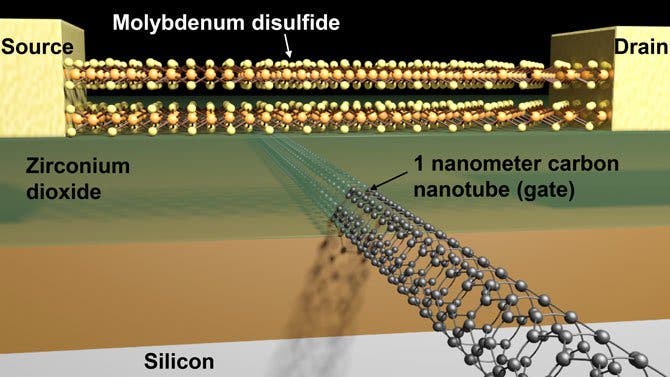Researchers working in Italy have developed a fully edible transistor from a humble toothpaste-based additive. It’s perfectly safe to swallow and could be used for non-invasive medical diagnostics, such as monitoring the gastrointestinal tract, or for intelligent drug delivery systems that provide real-time health data from within the body.

The idea of edible electronics isn’t as new as you’d think. Imagine a scenario where you could swallow a sensor to monitor internal health without invasive procedures, or where you could deliver targeted drugs only in specific conditions. Such devices could revolutionize gastrointestinal monitoring and early diagnosis of various diseases. So, it’s not surprising that researchers have been looking into them for years.
However, building electronics that you can safely consume isn’t exactly easy.
A key challenge is the lack of stable and efficient edible semiconductors, like transistors. While some food-grade materials have been explored, they generally lack the performance needed for real-world applications. This is exactly where the new innovation comes in.
The researchers, led by Elena Feltri and Mario Caironi from the Italian Institute of Technology, have designed a low-voltage electrolyte-gated transistor using Copper(II) Phthalocyanine (CuPc), a pigment used for whitening in toothpaste.
Why toothpaste pigments?
We all know you’re not supposed to eat toothpaste; you’re supposed to spit it out. But we often inadvertently swallow a part of it, and it’s not a problem. Several toothpastes use crystals of copper phthalocyanine, a blue pigment that also acts as a whitening agent. This pigment is already approved and widely used, and we’ve been swallowing it for years without any detectable side effects.
Researchers began by assessing the amount of CuPc ingested through daily use of toothpaste. The daily intake is estimated to range between 0.5 and 2 milligrams, values that far exceed the quantity of CuPc needed to build an edible transistor, making it a viable material for widespread use in ingestible electronic devices.
“With the amount of copper phthalocyanine we ingest daily, we could theoretically manufacture approximately 10,000 edible transistors,” says Elena Feltri, the paper’s lead author and a doctoral student at IIT’s CNST in Milan.
The material is not only safe to use for edible electronics, but its chemical structure is also very suitable for this type of application. The crystal structure facilitates charge conduction, making it an excellent transistor candidate.
Building the transistor

The edible transistor is based on an existing transistor architecture, utilizing CuPc as the active material. The key component, the electrolyte-gated OFET (EGOFET), operates at low voltages (< 1 V) and can function stably for more than a year. The transistor showed good reproducibility, with performance characteristics that pave the way for integrating these devices into more complex edible circuits.
The circuits are constructed on a derivative of cellulose with electrical contacts being printed using inkjet technology and a solution of gold particles (which are also commonly used in the food industry for decoration). The transistor “gate” is also food-grade. This component controls the flow of electrical current between the source and drain terminals, effectively acting as a switch or amplifier. This gate is made from a gel based on chitosan another food-grade ingredient used as a gelling agent.
The research team also explored the optical and morphological properties of CuPc thin films. They found that the thickness of the CuPc layer played a crucial role in the transistor’s performance. Thinner films displayed better charge transport properties, which are essential for creating high-performing, low-voltage devices. This detailed understanding of the material’s properties allowed the team to optimize the transistor’s design for use in real-world applications.
So what is it going to be used for?
Edible electronics could revolutionize healthcare in numerous ways. Devices like these transistors could be incorporated into “smart pills”. These pills could monitor the body’s internal conditions, track drug delivery, or even detect early signs of diseases like cancer or ulcers. Because you would ingest these devices, there’s no need for invasive procedures. And they could provide real-time data on a patient’s condition while ensuring the device safely dissolves or exits the body once its job is done.
This technology could also be important in the food industry. Imagine intelligent food tags that not only monitor the freshness of food but also track its nutritional content or detect harmful substances. The ability to integrate functional electronics into everyday food packaging could provide consumers with better insight into what they eat and increase food safety across the supply chain.
Despite the significant progress, there are still challenges to be addressed. While CuPc and other materials used in these transistors are generally recognized as safe, there is still a need for comprehensive toxicity studies. We must confirm that at the nanoscale, there are no hidden effects. The long-term effects of ingesting nanoparticles, even in small quantities, remain unclear. So, further research is necessary to ensure the widespread safety of edible electronics.
Furthermore, the integration of these transistors into more complex systems, such as fully edible microprocessors, will require additional advancements in edible materials science. However, the team’s work represents a major step forward in making fully edible, functional electronic devices a reality.
Journal Reference: Elena Feltri et al, A Fully Edible Transistor Based on a Toothpaste Pigment, Advanced Science (2024). DOI: 10.1002/advs.202404658






